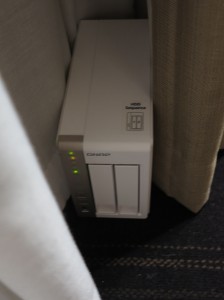Samsung hits it for 16Tb on a solid-state drive
Article
Wow, Samsung’s New 16 Terabyte SSD Is the World’s Largest Hard Drive | Gizmodo
My Comments
Samsung has released a solid-state storage device with the world’s largest capacity for a fixed-storage device.
This is in the form of a 2.5” 16Tb solid-state drive that is based around 256Gb NAND flash-memory dies rather than the usual 128Gb dies. At the moment, this drive, which has an asking price of approximately US$5000 to US$7000 will end up in enterprise and datacenter applications.
But it shows what a high-capacity solid-state drive in the order of 16Tb could be about. For example, it could be feasible for manufacturers to offer desktop and laptop computers with a solid-state drive that excels on performance, power consumption / battery runtime and storage capacity. It would also appeal to a situation where we will end up keeping a lot of data such as a 4K UHDTV movie collection or RAW “digital-negative” image files.
Other application classes I see this benefiting include digital cameras, camcorders and audio recorders where the goal is to see a compact device that can be used to acquire a lot of material for a long time without running out of battery power.


